The “Must Know” Guide to Iceland’s Volcanoes
Among the many natural wonders of Iceland are the beautiful volcanoes and the landforms that they cause. Even though Iceland is icy cold on the outside, many spots are full of hot lava just beneath the surface. The diversity makes this chilly nation a very hot destination for visitors from around the world.
Since volcanoes are such an important part of this exiting country, we put together a “must know” guide to Iceland’s volcanoes so that you do miss a single bit when planning your holiday. We want you to get the most out of your trip so explore the ins and outs of Iceland’s volcanoes before you’re wowed with their wondrous beauty in real life.
The Ultimate Guide to Iceland’s Volcanoes
Iceland is known for its magnificent landscapes that call for adventure seekers and lovers of beauty from around the world. From lava fields to caves, volcanic activity is responsible for much of this beauty.
You may be wondering what the deal is with all of the volcanoes in Iceland. Exactly how many are there and why are there so many? Are there any real benefits to the volcanoes or are they simply a tragic landmass?
There are so many possible questions about volcanoes, but luckily, we’ve got answers. This is your one stop shop for everything that you’ve need to know about Iceland’s volcanoes.
What are Volcanoes?
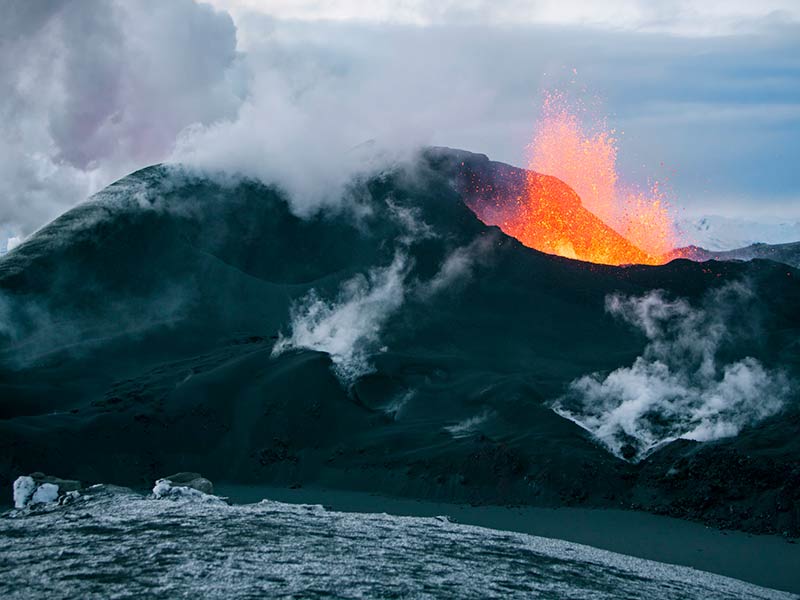
While you may relate volcanoes to a mountain with a bit of smoke piping out of the top and a some lava rolling down the side, similar to your grade school science fair project with baking soda and vinegar, volcanoes are so much more.
Volcanoes are basically defined as a rupture or crack in the crust of the Earth that allow lava/magma, gases, ash and other substances to spew through. They are typically found where the plates of the Earth meet, so most of the volcanoes of the world are found under the sea.
There are three main ways to categorize volcanoes: cone, shield and composite. These categorizations have to do with shape and make up of the volcano.
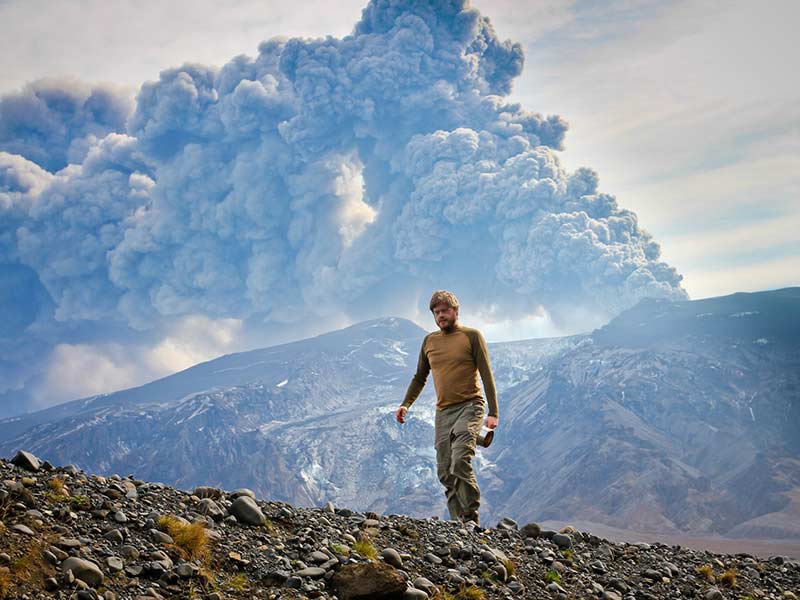
Many of the volcanoes in Iceland are active, but this does not mean they are inherently dangerous. It is important to listen to experts and follow the rules of each volcano when adventuring and exploring. Afterall, your safety is a priority.
Volcanic activity is actually responsible for many of the hottest attractions in Iceland that you probably would not recognize as volcanoes. Geysers, Icelandic springs, cliffs, caves and other landforms are created as a result of volcanic activity.
How Many Volcanoes are There in Iceland?
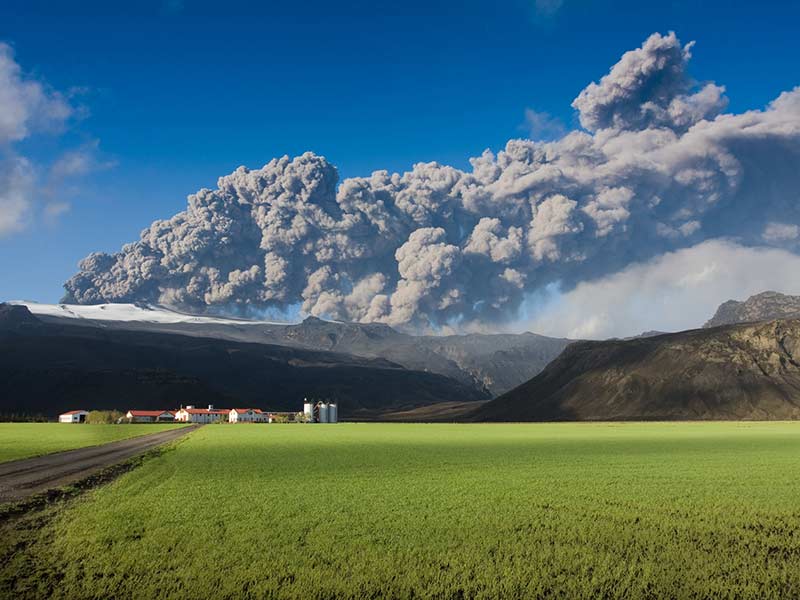
Iceland only covers about 103,000 square kilometers, making it a relatively small country, yet it is home to about 130 volcanoes. Under the land, there are over 30 active volcano systems.
The only part of the island that no longer has an active volcano system is the Westfjords. The reason for this is that the Westfjords is the oldest region of Iceland and was formed about 16 million years ago. This is the only part of the country that relies on electricity to heat their water as opposed to using geothermal energy like the rest of the nation.
Why are There so Many Volcanoes in Iceland?
The reason that there are so many volcanoes in Iceland is that the country lies where two tectonic plates meet. Basically, the tectonic plates are large pieces of the Earth’s crust in the layer called the lithosphere. Since these plates are not fused, extremely hot substances are able to rise from within.
Iceland lies on the Mid Atlantic Ridge. The Mid Atlantic Ridge is where the North American and Eurasian tectonic plates meet. This rift cuts almost directly down the center of the country. (You can actually scuba dive and snorkel in one area where these plates diverge! It’s called the Silfra Fissure!)
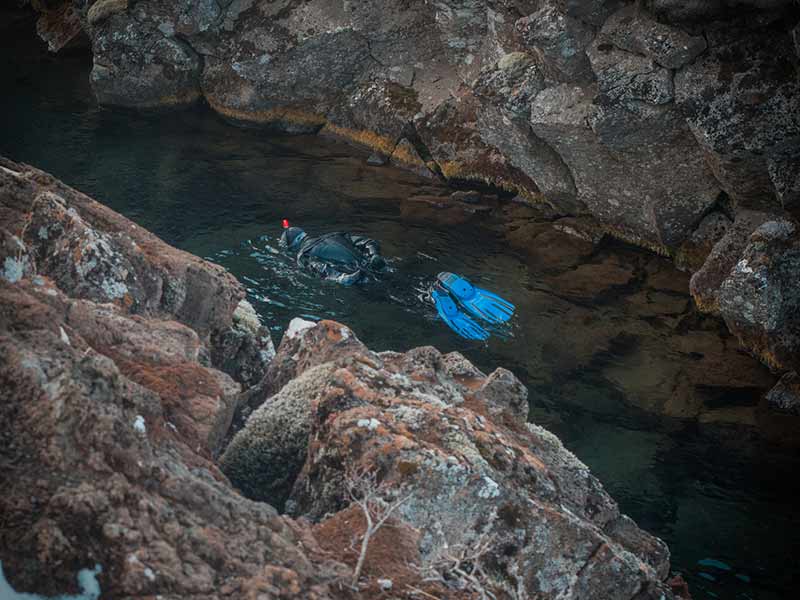
Since these tectonic plates are divergent, meaning they are pushing away from one another, there is a natural pull that forces the flow of magma from the mantle to the Earth’s surface. The plates diverge approximately 2.5 centimeters each year.
Although it could technically claim that it is part of both due to its land mass on both plates, Iceland identifies as neither a North American island or a European island.
How Often do Volcanoes Erupt in Iceland?
Volcanic eruptions are pretty unpredictable, but in Iceland, they occur relatively regularly. There isn’t really a pattern in which volcanoes erupt. It just happens. The only consistency that has been tracked over the past two hundred years is that there has been at least one eruption each decade.
The most recent eruption of an Icelandic volcano that scientists can be certain of was in 2014. The Holuhraun volcano in the Highlands had a relatively large eruption which created a beautiful lava field that spanned more than 85 square kilometers in size.
In 2010 Eyjafjallajökull had a major eruption, as well, that really shook up the world. This massive volcano’s eruption caused a huge cloud of ash to spread to the UK and continental Europe which grounded many flights. Flights were cancelled and air travel was a mess.
Scientists suspect that there are more volcanic eruptions but cannot be sure because many do not completely break the frozen seals that have formed over the craters.
The Dangers of Volcanic Eruptions in Iceland
Since there are so many active volcanoes in Iceland, Icelanders always have a little bit of fear in the back of their minds. Even if there is not a volcano nearby, an eruption from hundreds of kilometers away could cover their homes in soot and ash.
Although the fear of famine that was a reality of the past has been squashed by globalization, there are many other looming threats that come with living on an island with dozens of active volcano systems.
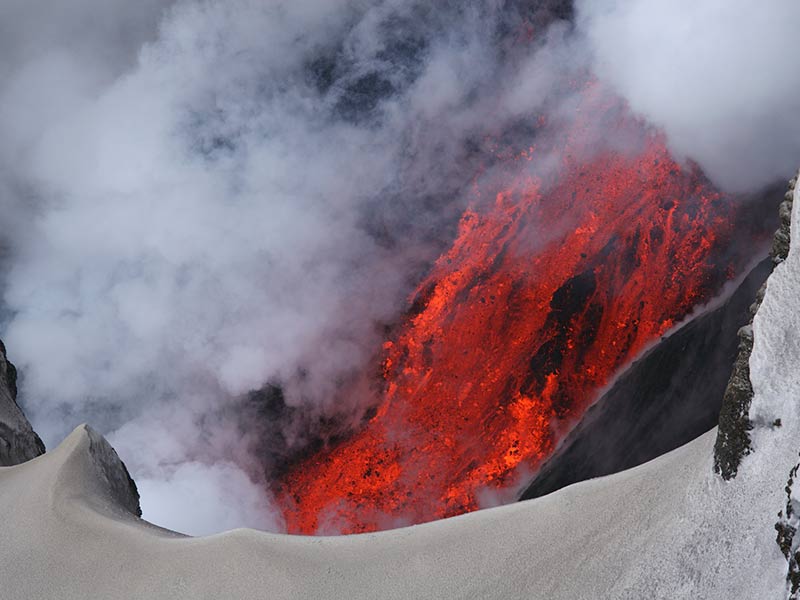
The three biggest dangers that come with volcanic eruptions in Iceland are ash clouds, lava fields and flooding. It is hard to say which of these factors is the most dangerous because it depends on the nature of the eruption.
If a volcano begins to erupt, your best bet is to leave. Leave your things and get out. Your stuff can be replaced, but you cannot.
The Worst Volcanic Eruption in Iceland
While volcanoes are beautiful to look at, they can be quite dangerous. The issue with volcanoes is that they are unstoppable. You cannot reason with a volcano or talk it out of erupting.
Throughout history, there have been some devastating eruptions in Iceland that will never be forgotten.
The most devastating volcano in Icelandic history is the eruption of Laki in 1783. This eruption lasted eight whole months. The ash from this eruption caused a haze that extended the whole way to the Middle East.
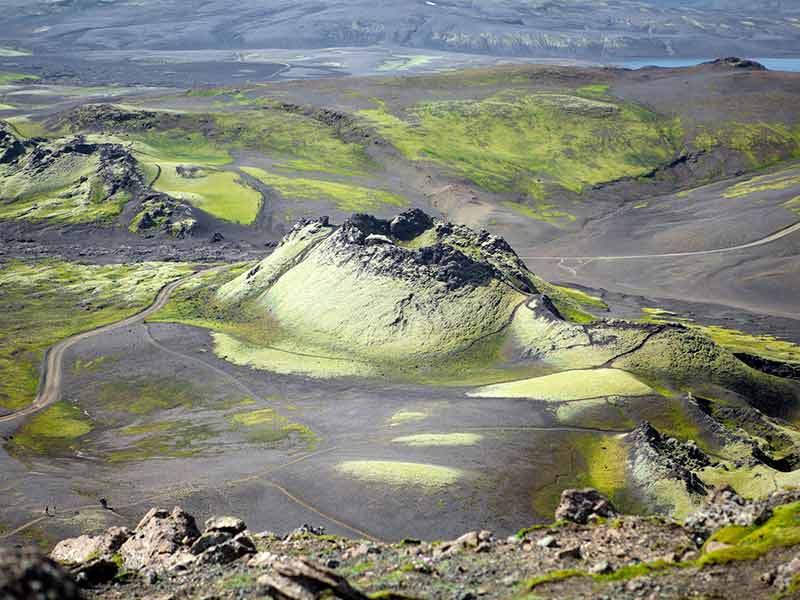
Laki’s eruption in 1783 caused the death in a large portion of the country’s stocks and farmstock. Over one-fourth of the nation’s population died of famine. This eruption is one of Iceland’s greatest tragedies to date.
Benefits of Icelandic Volcanoes
Other than their beauty that attracts tourists and stimulates the economy, volcanoes play a major role in Iceland. Volcanic activity is responsible for heating almost all of Iceland’s water and aids in the generation of all of the nation’s electricity. Pipes run directly from hot springs to people’s homes which make hot water easily accessible and highly affordable.
Iceland is operated on 100% renewable energy supplies, meaning no fossil fuels or toxic chemicals are necessary to create electricity. All of this is made possible by the harnessing of geothermal energy.
Clean and Renewable Energy in Iceland
Geothermal energy is simply heat from the earth that is harnessed and used as a clean source of energy to power things that we use in our everyday lives. About 30% of Iceland’s electricity i generated from geothermal power plants. All of Reykjavik runs on geothermal energy.
The other 70% of Iceland runs on hydroelectricity, which is another form of renewable energy. This is basically energy that is harnessed from running water.
Iceland is one of the only countries on the planet that runs exclusively on green energy sources.
Most Famous Volcanoes in Iceland
Iceland is definitely full of some pretty amazing volcanoes, but there are few that you absolutely have to check out if you’re in the area.
Eyjafjallajokull
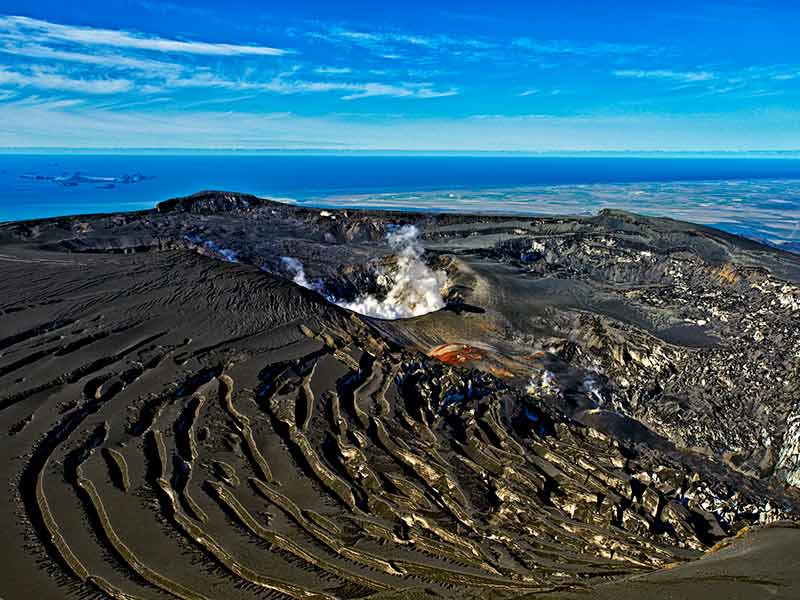
Eyjafjallajokull is famous for its 2010 eruption that canceled flights all over the world. While this eruption caused no harm to people, its cloud of ash spread to continental Europe. As this volcano caused a ruckus around the world, news anchors who were not familiar with the Icelandic language struggled with its mouthful of a name.
Although the eruption in 2010 made world news due to its grounding of flights and such, it was really quite small in relation to other eruptions throughout Icelandic history.
Location: Suðurland, Iceland
Status: Active
Last eruption: April 2010
Nickname: The Most Famous Volcano
Katla
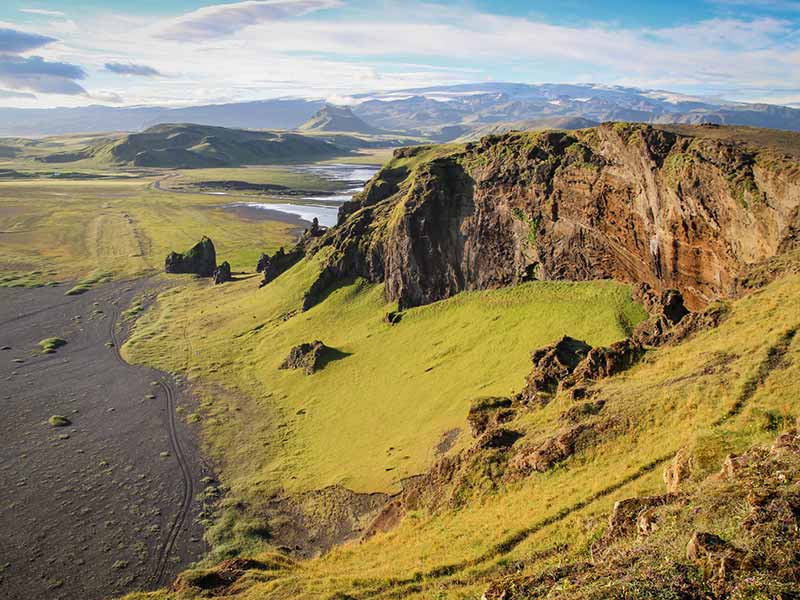
Katla is a large volcano in southern Iceland that scientists predict is working towards a large eruption. It has not had a major eruption in over 100 years, but has experience small activity that has failed to break the icy surface.
Location: Vík í Mýrdal
Status: Active
Last eruption: 1918
Nickname: The Explosive Neighbor
Grimsvotn Volcano System
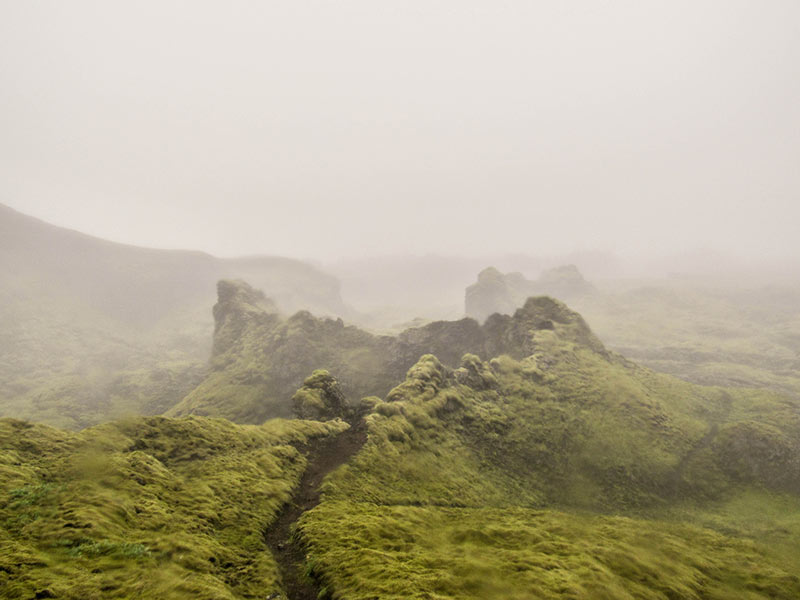
This volcano system is the most actively erupting volcano in all of Iceland. The Laki Volcano that erupted in 1783 was part of this system. What makes these eruptions so deadly is the cloud of ash that arises from the eruption. When the ash settles or people breathe it in, it can be quite harmful.
Location: Southeast Iceland
Status: Active
Last eruption: May 24, 2011
Nickname: The Deadliest Volcano
Hekla/Hecla
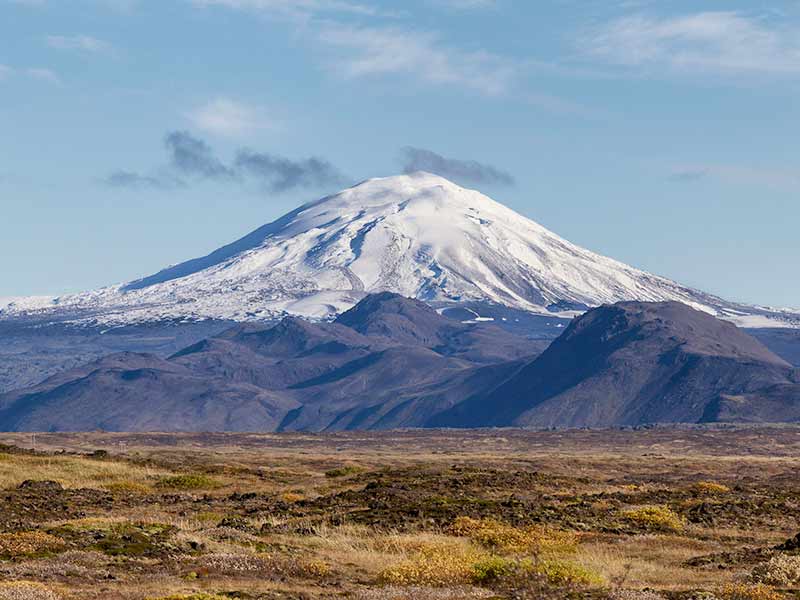
Hekla is known as the “Gateway to Hell” because it is very active and is known for its explosive eruptions. It tends to spew tons and tons of hot lava out of its vent. It is also considered quite dangerous because it has gone anywhere from a decade to over one hundred years without erupting.
The most recent massive eruption of Hekla was in 1845. This eruption was very damaging to the population because it wiped out a lot of their livestock.
Location: Southern Iceland
Status: Active
Last eruption: February 26, 2000
Nickname: Gateway to Hell
Hverfjall/Hverfell
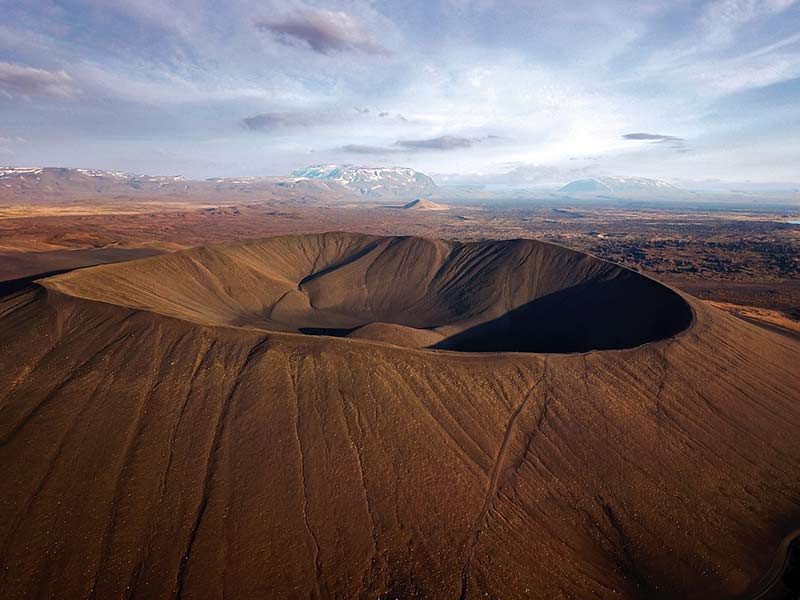
The Hverfjall Volcano hasn’t erupted in 4500 years, despite the regular volcanic activity from its neighbors. Its dormant state and its gentle slopes make it an inviting challenge for hikers of all levels of expertise. This volcano is easily accessible from the Iceland Ring Road and only takes about an hour to hike to the top.
If you are new at hiking and are looking for your first volcano to trek, you should try Hverfjall.
Location: Mývatn
Status: Dormant
Last eruption: 2500 BP
Nickname: Easy Hiker
Snæfellsjökull
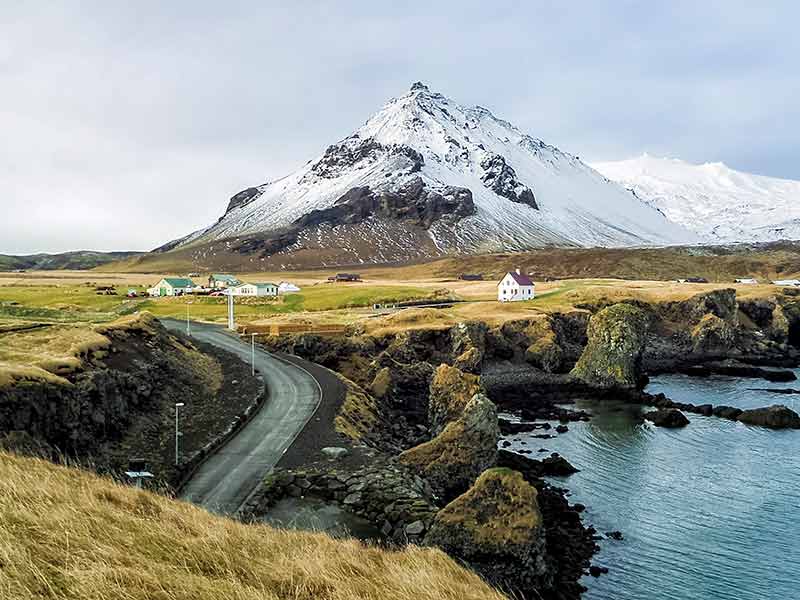
Snæfellsjökull is one of Iceland’s most beautiful volcanoes, which is why it’s also one of the most popular destinations for visitors. It has been dubbed a national park because it is so dearly treasured as one of Iceland’s gems.
This volcano’s beauty has served as an inspiration to many artists which has made it a prominent cultural figure.
It is also a target of much paranormal suspicion. Conspiracy theorists have come up with tales throughout time, but the most famous was the predicted alien invasion of November 5, 1992. This volcano attracted camera crews and media attention from around the world. Unfortunately, there were no alien sightings. The night was rather disappointing.
Location: Snæfellsnes Peninsula
Status: Active
Last eruption: 200 CE ± 150 years
Nickname: The Door to the Center of the Earth
Askja

Imagine not knowing that the lake down the street was a volcano until one day it violently erupted. Talk about shocking. This was the case for Askja.
In 1875, Askja had a massive eruption that poisoned the land and killed a great deal of the people’s food supply. The effects of this eruption were so intense that many people were forced to move to North America to start new lives.
These days, Askja is simply a lovely geothermal lake that remains frozen for much of the year.
Location: Dyngjufjöll Mountains
Status: Active
Last eruption: 1961
Nickname: Iceland’s Hot Spring Volcano
Krafla

Krafla is another relatively active volcano in the northern region of Iceland. It has 29 recorded eruptions since the country’s settlement in the 9th century. It is well known for the shining blue lake in its crater.
This volcano is close to a few other hot attractions in Iceland which makes it the perfect stop for visitors and tour groups.
Location: Mývatn
Status: Active
Last eruption: 1984
Nickname: Cold Crater Lake Volcano
Þríhnúkagígur
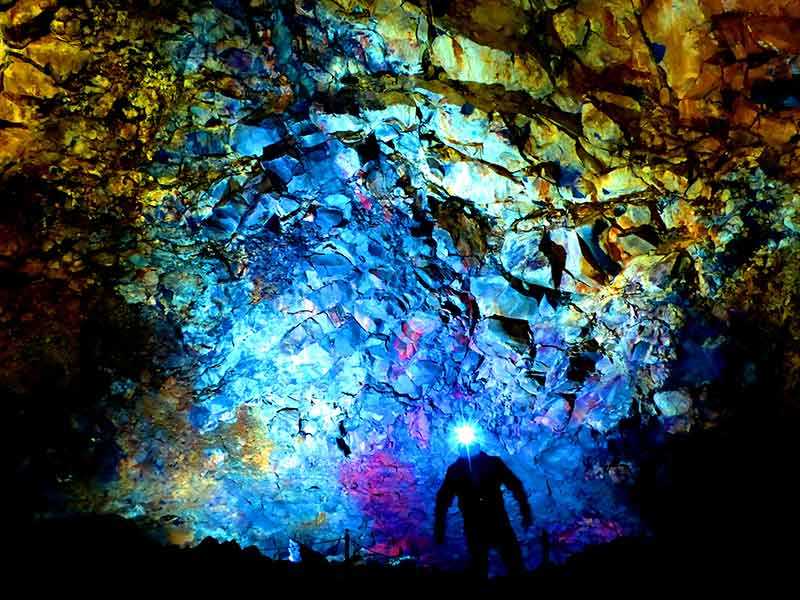
Þríhnúkagígur is the only volcano in the world that has a magma chamber that visitors can actually access which makes it a truly unique destination. This volcano has been dormant for thousands of years, which means it can be explored without danger of eruption. You can safely enter this magma chamber through a mine shaft that lowers you into a gigantic cavern.
To imagine the size of this volcano, picture this: the statue of liberty can be lowered down the mine shaft. It is truly massive.
Aside from its gigantic size, the natural coloration of the inside of the volcano is absolutely beautiful. Through the years, different minerals have been stored in the walls which color it vibrant shades of red, green and yellow.
Location: near Reykjavik
Status: Dormant
Last eruption: ~2000 BC
Nickname: The Enterable Volcano
Volcano Tourism in Iceland
Until the eruption of Eyjafjallajokull in 2010, much of the world was unaware of the wonder and beauty that Iceland has to offer. It was not until the news covered this travel catastrophe and film crews panned over the magnificence of Iceland’s landscape did great waves of people from foreign lands feel the inclination to tap into this beauty for themselves.
This burst of tourism has brought many visitors to Iceland’s wonderful volcanoes, hot springs, caverns, geysers, cliffs and geothermal activity areas. Volcanoes truly are the center of tourism in Iceland.
Best Volcano Tours in Iceland
Volcanoes are one of the most magnificent natural phenomena in existence. While they are often quite safe, it is best to explore volcanoes with an expert tour guide who can make sure that you’re staying in the safest areas at the safest times. Afterall, who wants to get hurt on holiday?
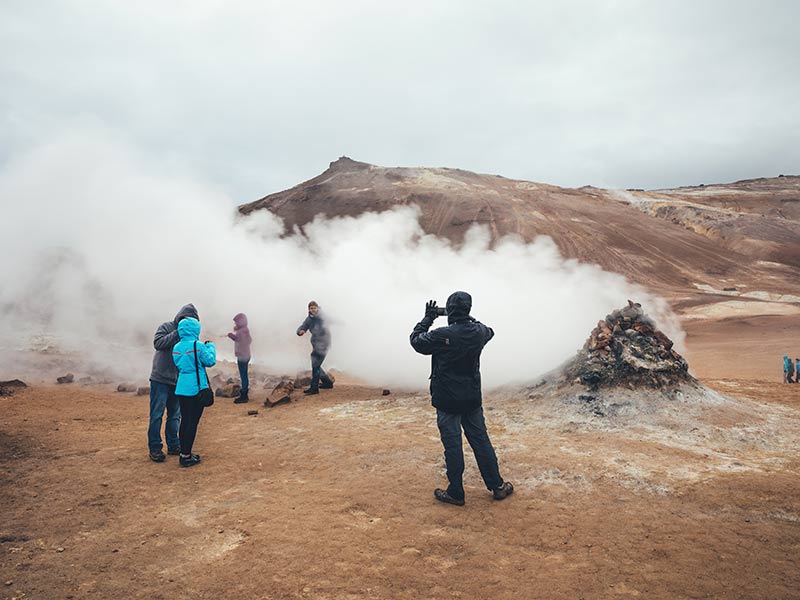
Touring with a group offers tremendous insight on the culture and history of the region that you are touring. You also have the chance to meet interesting people and form friendships with people from around the world.
Explore some of the best volcano tours that Iceland has to offer!
Þórsmörk Volcano Hike
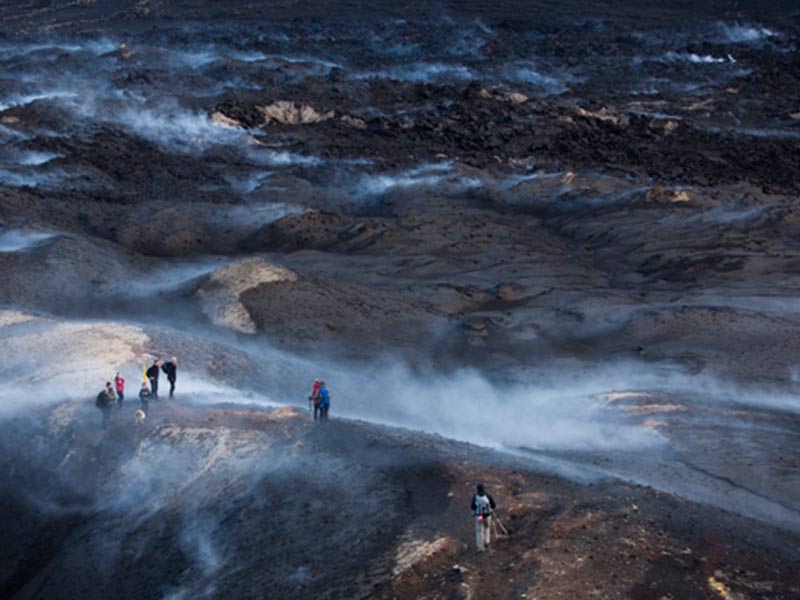
Start your day with a guided Jeep tour through Iceland’s Þórsmörk valley before hiking the Eyjafjallajokull and Fimmvorduhals Volcanoes.
Some of the hottest spots on the tour include:
- Þórsmörk Valley (e.Thorsmork Valley)
- Eyjafjallajökull Volcano
- Seljalandsfoss Waterfall
- Gígjökull Glacier
- Fimmvörðuháls Volcano
- Magni and Módi Craters
You do not want to miss out on the endless glaciers, Icelandic waterfalls, geysers and more on this amazing tour!
Length: 12-14 hours
Price: 229 €
Contact us to learn more about this tour and other amazing tours today.
The Lava Tunnel
Witness the inner workings of a volcanic eruption in the lava tunnel Raufarhólshellir, which is one of the biggest in Iceland and gets up to 30 metres wide and 10 metres high. Walk in the path of a lava that flowed thousands of years ago.
The lava tunnel Raufarhólshellir is located only 30 minutes from Reykjavík and the experience is truly unlike any other.
Length: 3 hours
Price: 79 €
Landmannalaugar Safari – Super Jeep day tour
Hop in the super Jeep and prepare for the adventure of a lifetime. Enjoy an array of beautiful views in the southern region of Iceland. This amazing tour takes you to Landmannalaugar hot springs and the Hekla volcano. And don’t forget to bring along your bathing suit and towel for a dip in one of Iceland’s natural geothermal spots. What could beat that?
Length: 12 hours
Price: 219 €
Similar Travel Guides
The volcanoes in Iceland are cool, but why stop there? Check out all that this amazing country has to offer!
- The Blue Lagoon: The Ultimate Travel Guide
- Traveling the Golden Circle
- Top 9 Tours in Iceland for Fun and Adventure
- Best Things to do in Iceland: Planning Your Icelandic Holiday
- Hottest Spots in Reykjavik
Want to come on holiday to Iceland but don’t feel like planning a trip? We offer a variety of Icelandic tours that range from a few days to over a week in length. Traveling with Hekla is always a great choice. Iceland has a lot to offer and we will make sure that you don’t miss a beat.
Visit the Volcanoes in Iceland
Now that you’re an expert on Icelandic volcanoes, it is time to plan your trip! Whether you’re a beginner and you want to hike Hverfjall or you’re up for a challenge and you plan to take on one of the bigger guys, Iceland is full of opportunities for you to adventure and explore.
Book your flight and grab your hiking boots. Adventure awaits.





